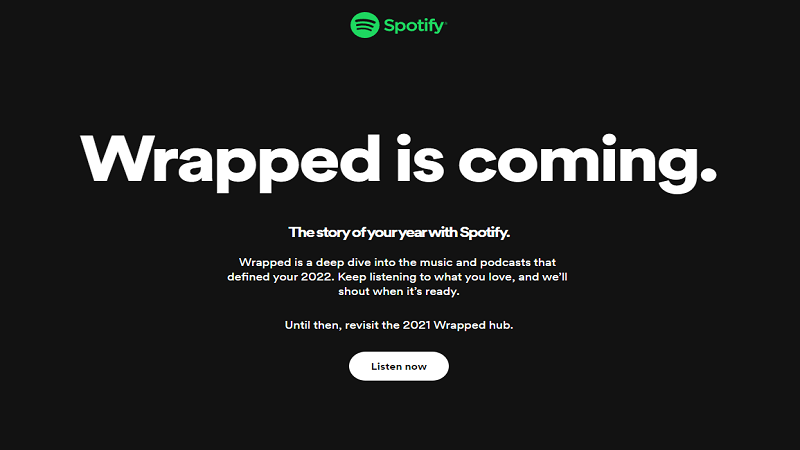Finally! We’re pretty sure that’s the cry of relief Spotify Premium users must have let out when they saw the news today. Why? Because, after years of waiting, they should be able to listen to music on Spotify in HD audio quality. Spotify’s Lossless audio is available: how to get it? We’ll explain everything.

Spotify’s Lossless audio: a bit of history
For a long time, it seemed like this feature would never arrive. Constantly announced, then delayed, and finally canceled without explanation, lossless audio seemed like a pipe dream on Spotify. To such an extent that, in recent years, Spotify has seen its main competitors, including Apple Music and TIDAL, slip right under its thumb.
It was strange, for many experts, and frustrating for its members, that Spotify didn’t react. And suddenly, on September 10, 2025, the news broke: Spotify now offers a lossless option, which should allow music to be listened to with greater detail, a richer, more precise sound, and closer to the way it was recorded.

For Spotify subscribers, the wait has been a rollercoaster of emotions. Four years of frustration, doubt, and cryptic communication from the Swedish giant. With a press release, Spotify finally put an end to this long wait, acknowledging the patience and loyalty of its subscribers.
Gustav Gyllenhammar, from Spotify, said: “We’ve taken the time to build this feature in a way that prioritizes quality, ease of use, and clarity at every step, so you always know what’s happening under the hood. With Lossless, our premium users will now have an even better listening experience.”
The excitement is high, and the tech world is going wild. But while the news is encouraging, it comes with a few details that could prove frustrating.
Spotify’s Lossless Audio: How Can You Get It?
Good news for Spotify subscribers: lossless audio in 24-bit/44.1 kHz FLAC quality is offered at no additional cost. It won’t cost you a dollar more than your initial subscription to enjoy it. The only requirement is that you’re a Premium member. When people say the cost is invisible, that’s both true and false: Spotify has been increasing the price of its monthly subscriptions in many markets for months. Was this a way to prepare for the arrival of this lossless option? It’s impossible to say, but it was worth highlighting.
To enable lossless audio, simply enable it in your settings, under “Settings & Privacy,” then “Media Quality.” You’ll receive a notification letting you know the option is available.
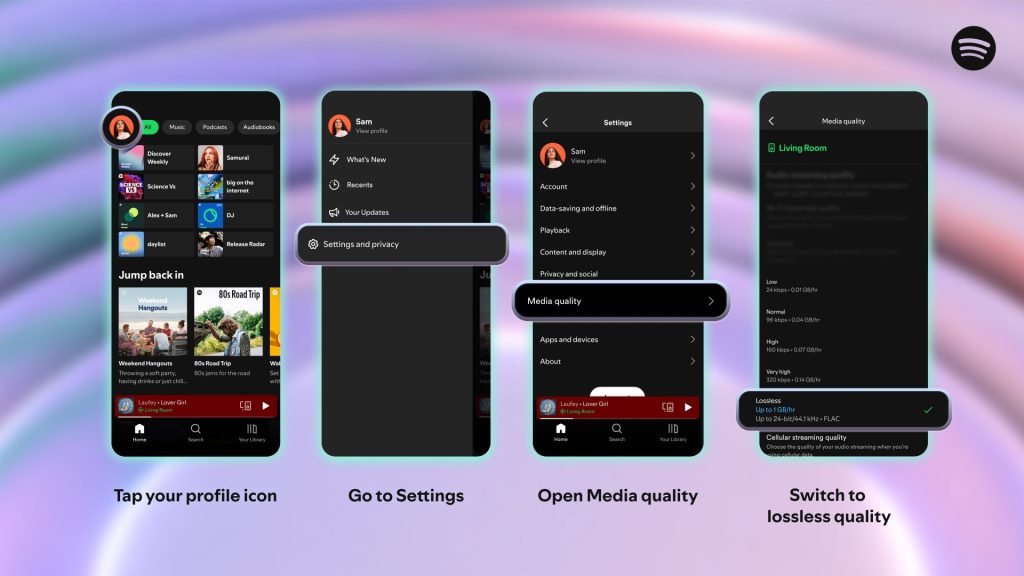
Note that, like its competitors, Spotify allows you to adjust the audio quality based on the network you’re using. Lossless audio on a mobile network actually uses more data than if you’re on your home Wi-Fi network. This option may seem like a gimmick, but it’s not!
Is Spotify’s Lossless available in your country?
Throughout October, lossless audio will be rolled out in fifty markets. Premium users in Australia, Austria, Czechia, Denmark, Germany, Japan, New Zealand, the Netherlands, Portugal, Sweden, the US, and the UK can already benefit from it. Other countries will follow, but Spotify hasn’t yet announced a specific rollout date. In any case, don’t panic: you shouldn’t be left behind.
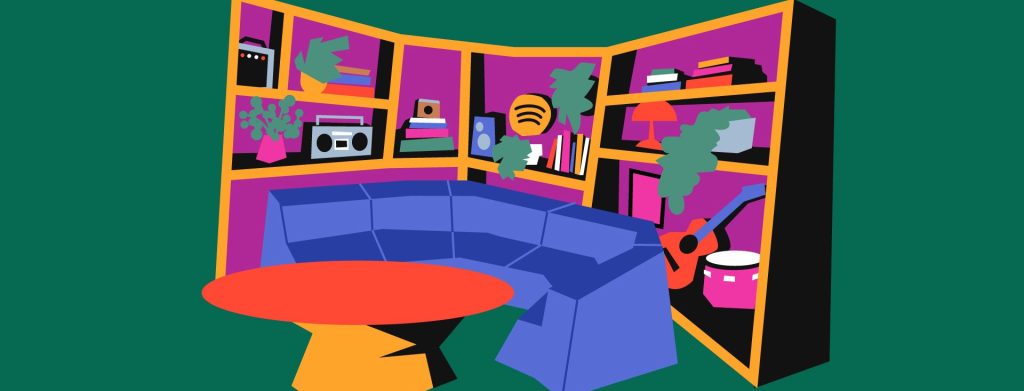
This isn’t the only new feature announced by Spotify. In addition to lossless audio, Spotify has updated some of its features. For instance, the enhanced DJ function powered by Artificial Intelligence now takes your requests into account for an even more personalized experience. This means you can have a more interactive and tailored music listening experience. Similarly, the AI-generated playlists along with mixes with personalized transitions offer a unique and dynamic way to discover new music and enjoy your favorite tracks.
Spotify seems poised to take everything by storm in the second half of 2025!
Spotify’s Lossless Audio: What’s Next?
With the release of its lossless audio, Spotify has made a big splash. Its detractors, if we focus solely on the platform’s features, automatically point to this shortcoming when comparing Spotify to its competitors. With this new addition, there’s no doubt that the arguments claiming Spotify isn’t as good as Apple Music, Deezer, or TIDAL are starting to fade. Spotify now stands out as the most comprehensive and, perhaps, the most powerful streaming service.
But beware! It’s worth noting that TIDAL, Apple Music, and Qobuz remain ahead of Spotify in terms of audio quality, offering up to 24-bit/192 kHz, whereas Spotify is currently limited to 24-bit/44.1 kHz. This means that while Spotify’s lossless audio is a significant improvement, it still falls short of the highest quality available in the market. Audiophiles will therefore likely remain skeptical, despite the efforts made.
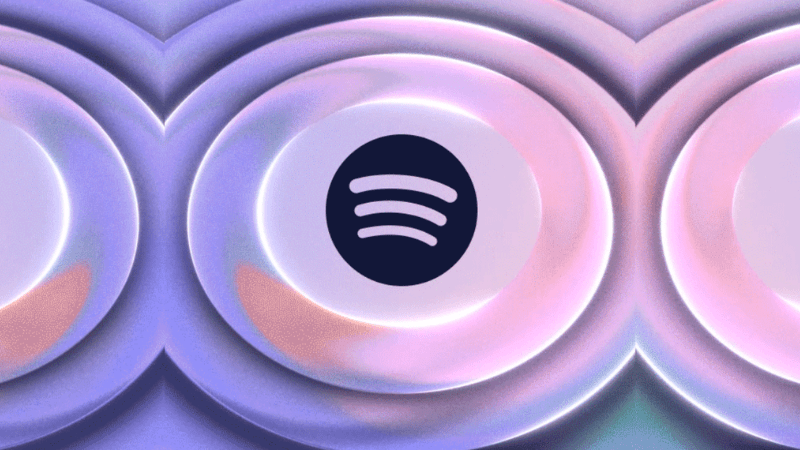
However, this shouldn’t overshadow the recent controversies surrounding the streaming platform, which we discussed in detail in this article, regarding its founder, Daniel EK, his investments, and his lack of regulation regarding Artificial Intelligence. What’s next for Spotify? The company now appears more dominant than ever, both in terms of its user base and its status as market leader, as well as in the features of its app. Is Spotify now flawless? The question is worth asking, but let’s still wait for the first user feedback, particularly from the audiophile segment, to get a better idea.
Still, if you were previously a user of another Spotify platform, you might be tempted to make the switch. And that’s good, because we have a ready-made solution for you.
Getting the best out of Spotify with Soundiiz
If you were subscribed to a platform other than Spotify, you might have been waiting for the Swedish giant to launch HD audio before making the switch permanently. In fact, until now, this was one of Spotify’s only major flaws. The question then arises: how can you test Spotify’s lossless performance without losing all the data you’ve accumulated elsewhere? Switching from your platform to Spotify is one thing; losing all your streaming data is another. With this challenge in mind, in 2012, the founders of Soundiiz created a data transfer tool that they have continued to improve and update ever since.
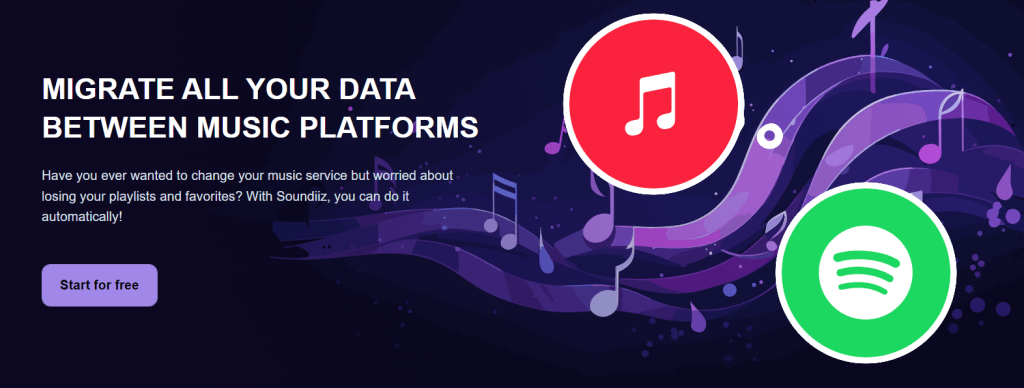
Recognized worldwide for its reliability, accuracy, and speed, our Transfer feature enables you to migrate your data from one platform to another in seconds or minutes, depending on the size of the data being transferred. And when we say ‘data,’ we mean all the data. Liked and favorited tracks, downloaded albums, followed artists, and playlists: everything is transferable. This means you can seamlessly switch to Spotify without losing any of your favorite music or playlists.
Metadata!
To make our transfers as efficient as possible, we base our system on metadata identification. The process is quite technical, but Soundiiz will search for songs or artists that match those you had on your original platform. We will thus create a mirror of your Deezer, Apple Music, YouTube Music, Amazon Music, TIDAL, or Qobuz account on your Spotify account. And data loss will be, we guarantee, minimal!
Our free version will allow you to transfer up to 200 references to Spotify. If you need to transfer more, we offer two Premium options that you can subscribe to and then cancel if you only require a single transfer. Convenient, isn’t it?
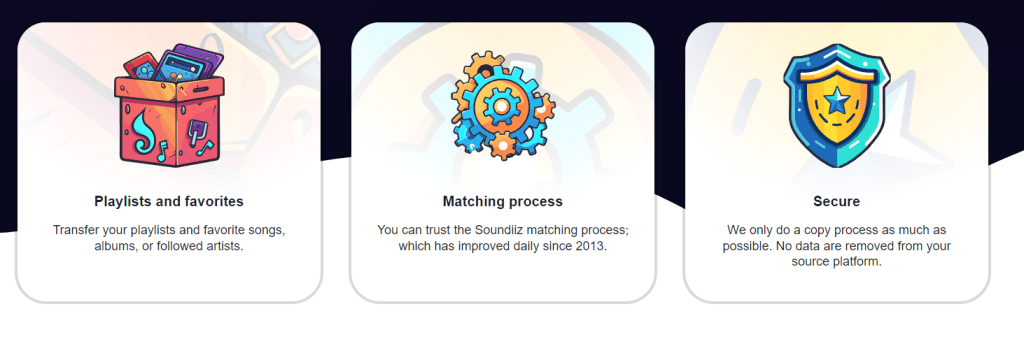
The good news is that Soundiiz works both ways. After testing Spotify’s Lossless feature for a few months and being unsatisfied with it, do you want to transfer your data back to the platform you were using previously? No problem, you can do it by following the same procedure and get back to your old habits! We designed Soundiiz as a companion for your daily music listening, simplifying all your steps and saving you a lot of headaches.
The procedure is straightforward—for a detailed tutorial, click here—and all you need to do is follow the instructions.



